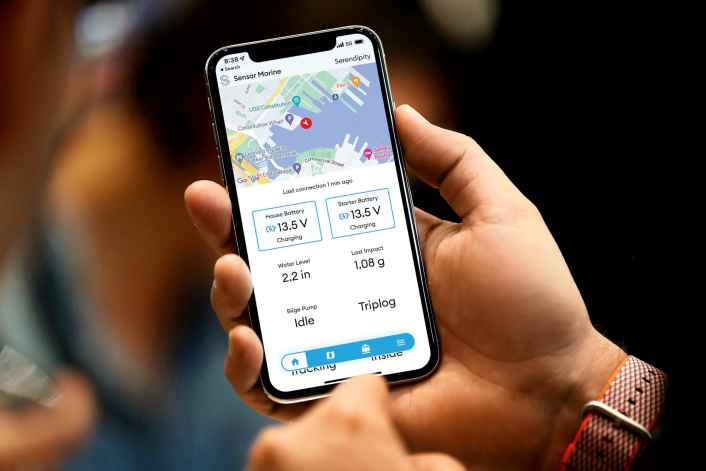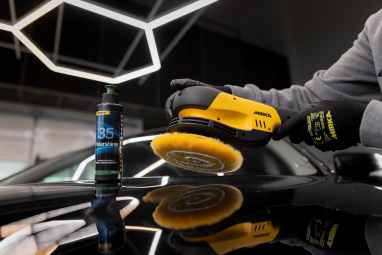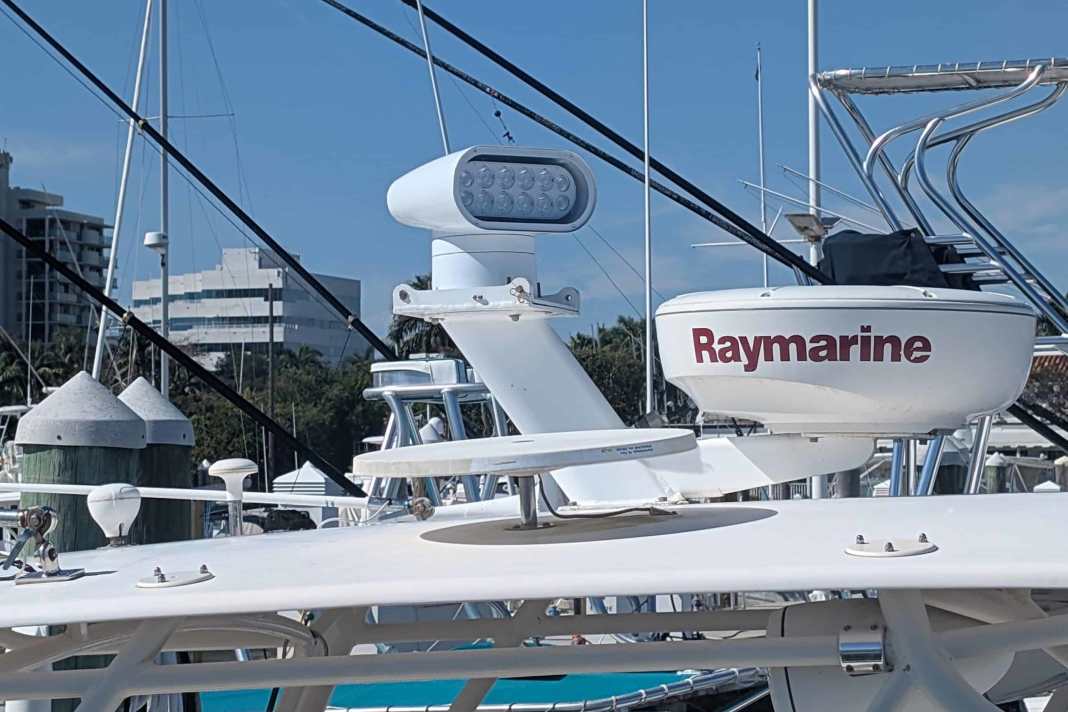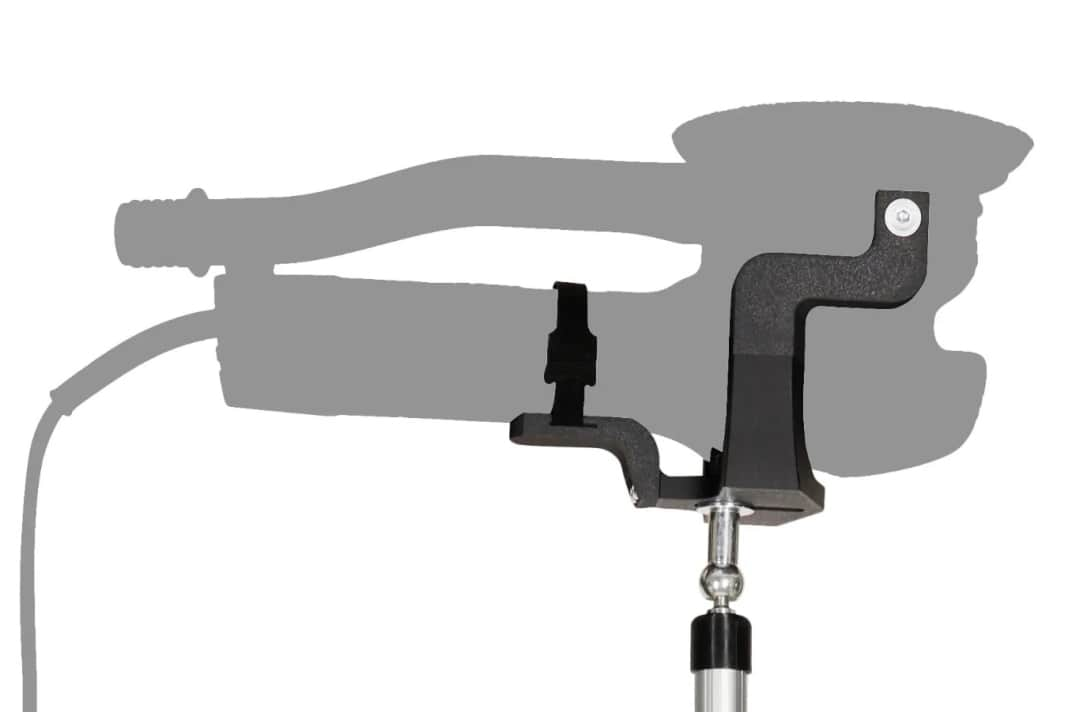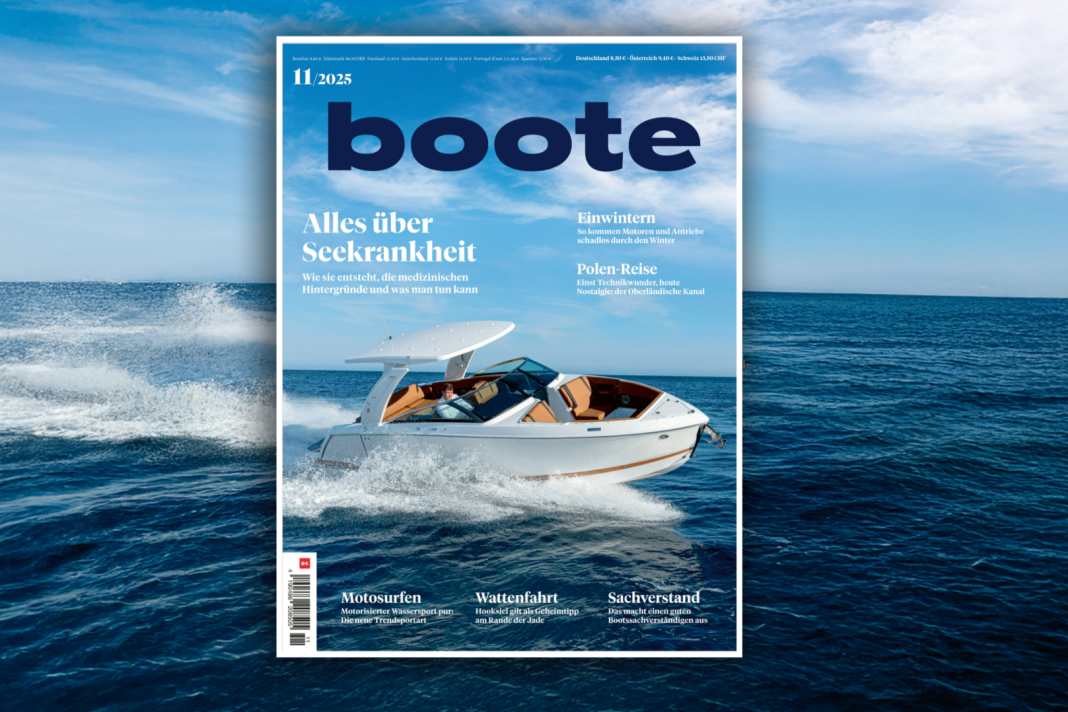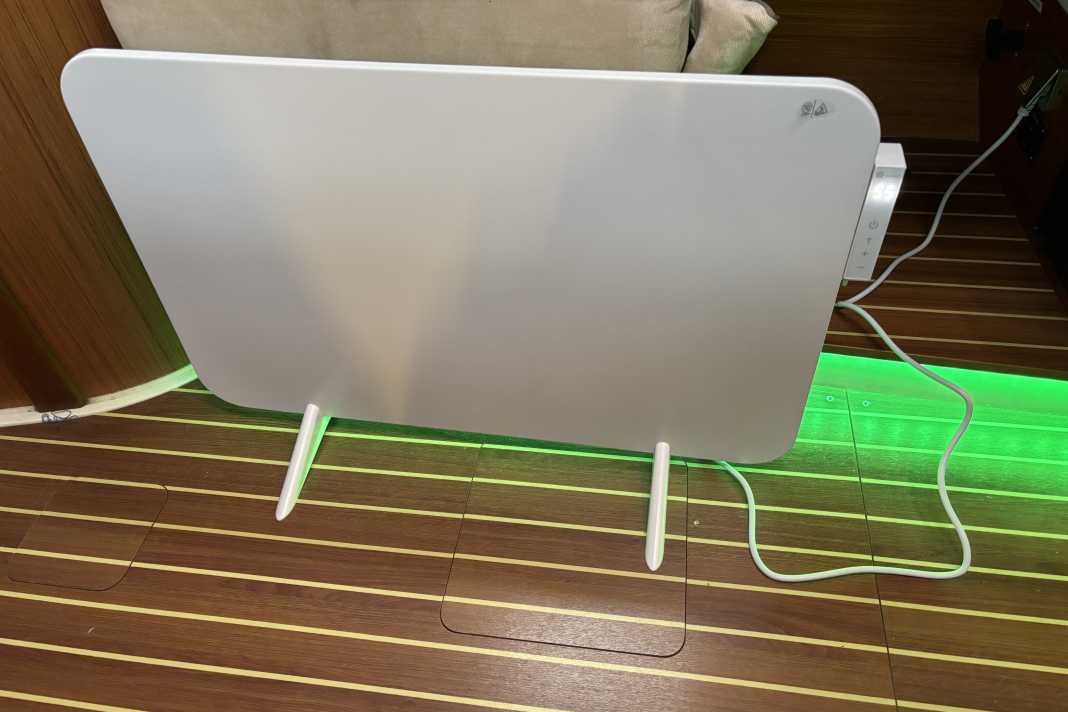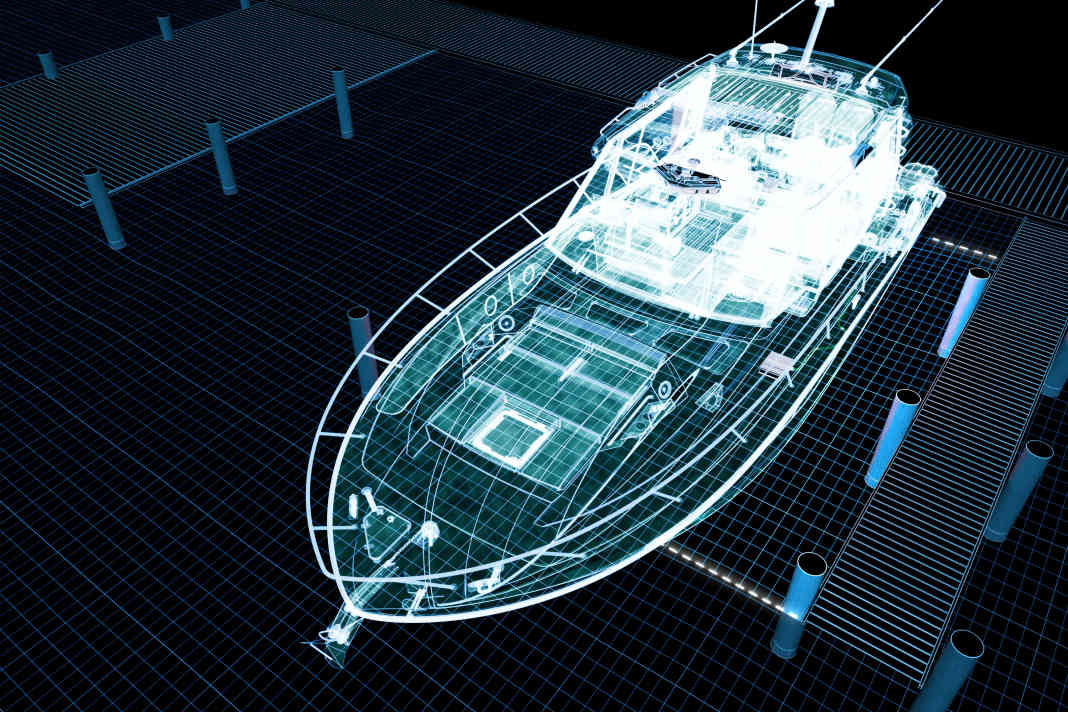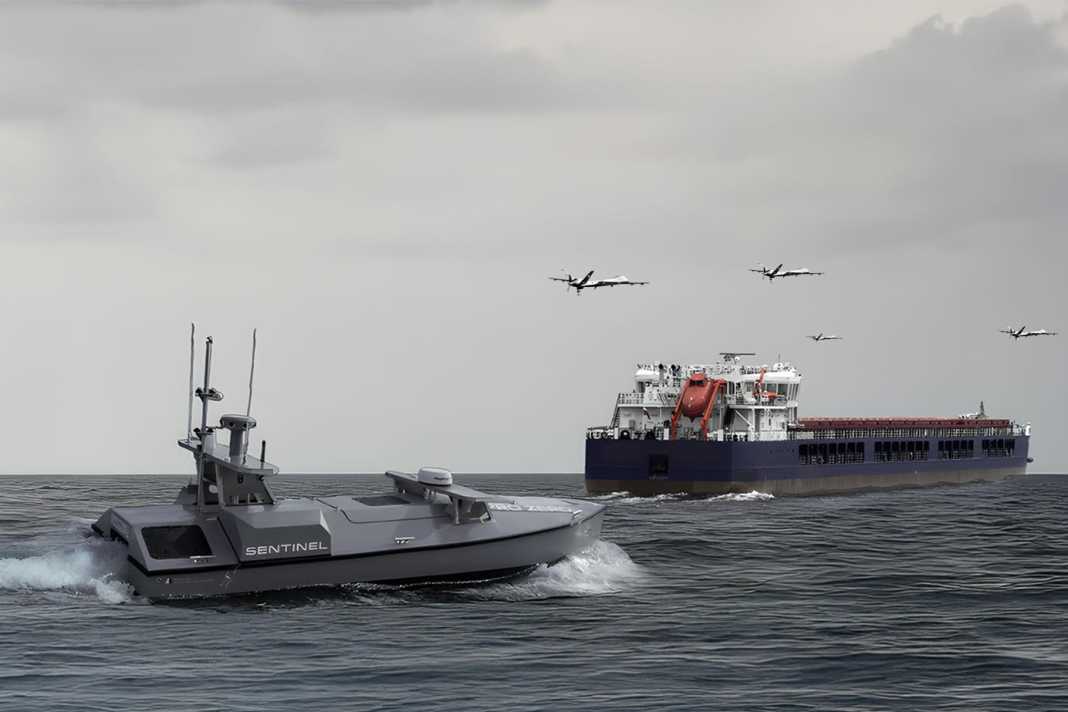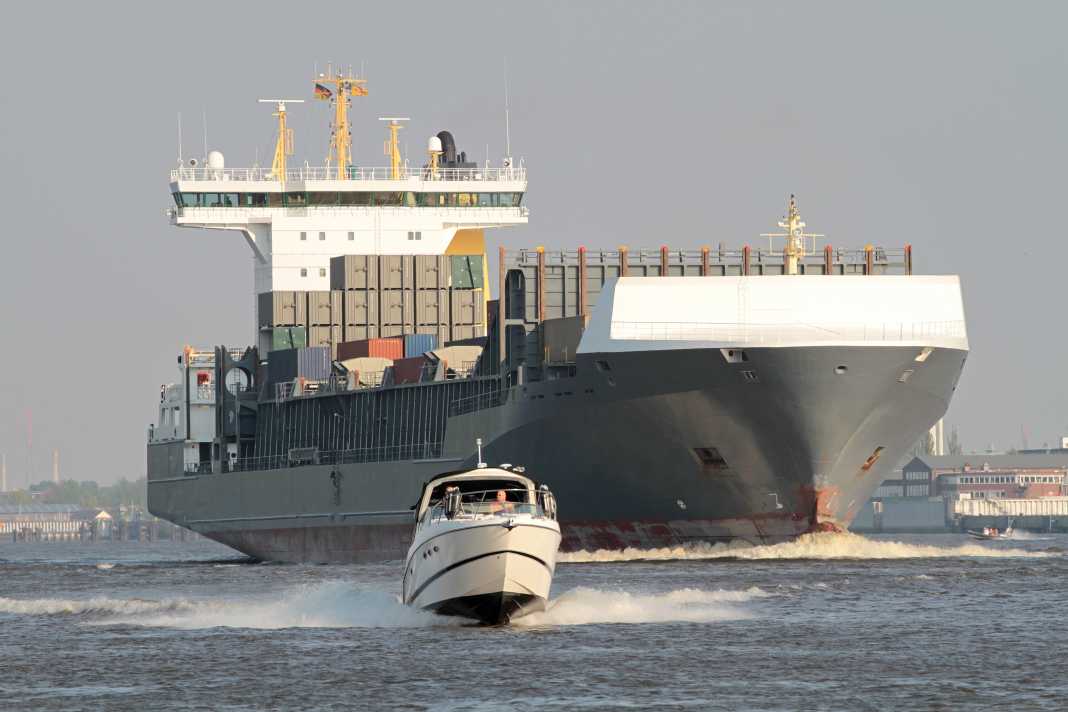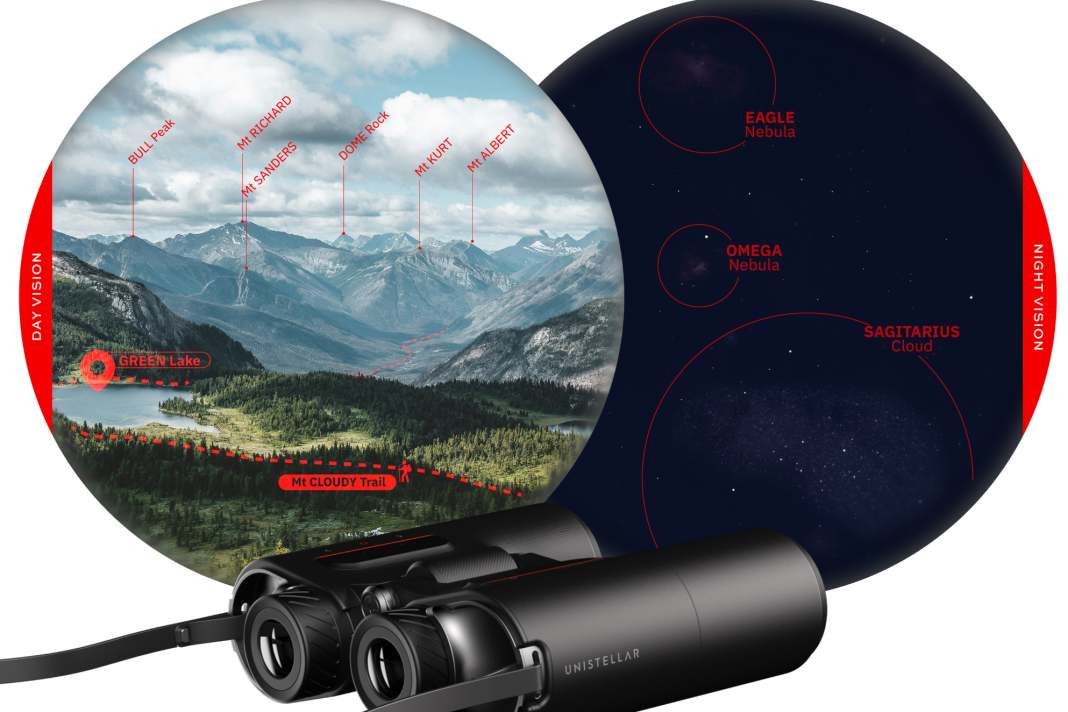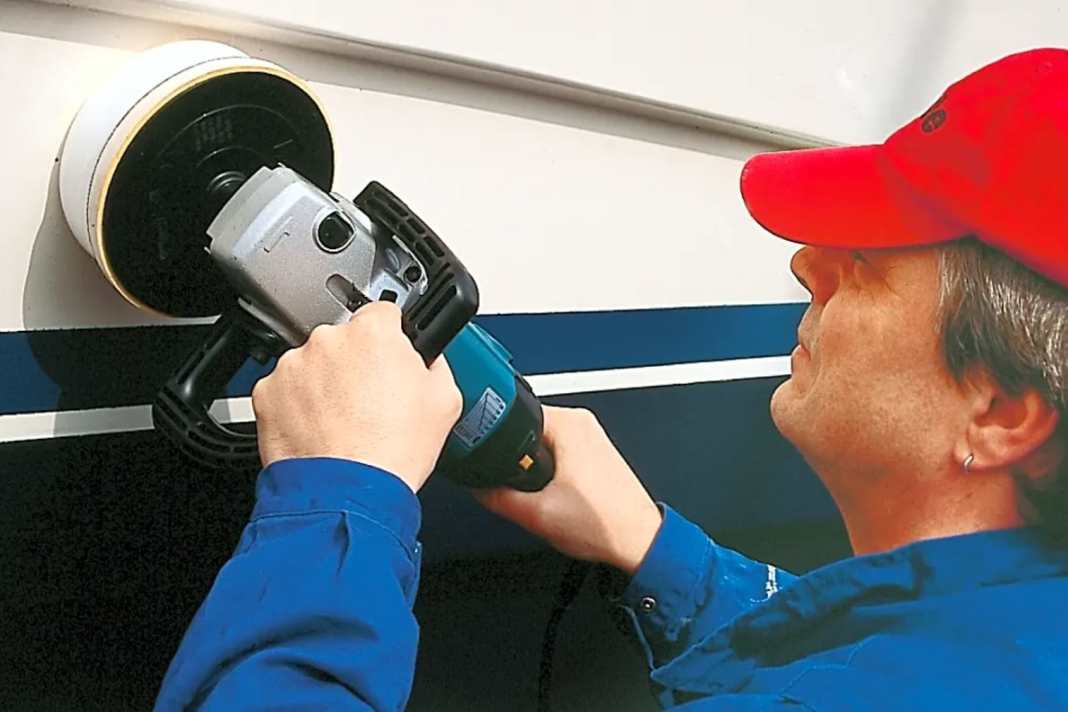Boat technology
State-of-the-art technology has become an integral part of the world of motorsport. It has found its way into all areas on board: From the engine compartment in the belly of the Boats all the way up to the bridge. Propulsion, navigation, safety, communication and everyday life - all of this depends on technology. It doesn't always have to be new high-tech - technology that is decades or even centuries old is still used in some cases. One thing is certain: Boat captains and crew members will have no choice but to familiarise themselves with the technology on board.
How do the machines, devices and technical aids work? How do you operate them? Which ones do you really need? BOOTE introduces you to boating technology and presents both technical aids that are indispensable and those that are just for entertainment or convenience. BOOTE gives you important tips and tricks on maintenance and repair and tells you where you can do it yourself - and where you'd rather not.
Drive systems - nothing works without them
The technical centrepiece of every motorboat is its Drive. Boat owners can choose between outboard and inboard engines and between diesel and petrol engines. Of course, this is only a rough categorisation and you can differentiate more precisely and find other drive systems.
Inboard
The classic among the boat drives is aInternal diesel engine. In the past, there were hardly any alternatives to it - but things are very different today. Nevertheless, diesel engines are still widely used: They are robust, durable, economical and do not rely on electronics (although this no longer always applies to newer diesel engines). Diesel is also available everywhere in the world. An alternative are Inboard with petrol drive. They are generally cheaper to buy, lighter and more suitable for frequent short journeys. One disadvantage is the susceptibility of your electronics to contact with water and the risk of explosion caused by petrol vapours in the engine compartment.
Inboards can be further categorised according to the way in which the shaft and propeller are connected to each other. The original, simplest form of this is the connection via theRigid shaft of the engine with the propeller without any deflection or transmission. One invention that has revolutionised boat propulsion is theZ-drive. The power of the engine is transmitted to the propeller via a gearbox. The gearbox is located on the outside, the engine on the inside - at the very back of the stern, which saves a lot of space. While the rigid shaft drive is used for larger boats or ships, the Z-drive is the predominant drive type for faster motorboats up to around twelve metres in length. Less common is the so-calledV-Drive technology is used, in which the power is transmitted via a shaft with an idler gear and the engine can therefore be moved further to the rear of the ship.
Less well-known, rarer internal drive types are, for example:
- TheWater jet drive (also known as jet propulsion) is mainly used in jet skis or jet boats and utilises the recoil principle.
-Saildrive is a propulsion system specially developed for sailing boats, in which the shaft is guided vertically outwards through the hull and finally deflected.
- TheIPS system is characterised by forward-facing, counter-rotating towing propellers that generate horizontal thrust.
- At theSurface drive the propeller is only half submerged and has a larger diameter. This ensures very high efficiency, which ultimately means a lot of speed.
- AlsoElectric motors are used as inboard motors instead of the combustion engines.
Outboard motor
The trend is increasingly moving towards Outboard motors The new outboard engines are in no way inferior to inboard engines and offer numerous advantages. With outboards, the engine, gearbox and propeller form a single structural unit. The outboard is attached to the stern of the boat. The power is transmitted from the engine to the propeller via a shaft. Smaller outboard motors are usually equipped with a manual pull starter and a tiller control. Larger, more powerful models have electric starters and remote control systems.
The advantages of outboard engines are obvious: the storage space inside the boat can be used for other purposes as the engine is located outside. When carrying out maintenance and repair work, there is no need to crawl around or work overhead in the cramped engine compartment - the outboard motor is freely accessible from all sides.
Several outboards can be attached to a boat for more power, driving stability and safety (in the event of an engine failure at sea).
Most outboards are petrol engines. However, some manufacturers also produce diesel engines. Electric motors are also available in the lower power range.
Engine maintenance and repair - leave it to the professionals or do it yourself?
You will have to deal with your boat's propulsion system time and again, even after you have made your purchase decision. A boat engine needs to be serviced and checked regularly to ensure that it performs well for as long as possible and that your journeys run smoothly without unwanted stops. Some tasks should be carried out after every trip, others only before or after winter storage. You should be able to carry out everyday maintenance tasks such as flushing the outboard motor or visually checking for leaks yourself. You can either outsource the winterisation tasks or, with a little skill, the right tools and enough time, do them yourself. BOOTE regularly provides tips on maintaining the technical components of boats.
Despite all the care and maintenance, no boat owner is completely immune to engine problems or failure. Excessive fuel consumption, leaks or unpleasant odours can be indications of a defect. Non-experts in mechanical matters should now consult a boat fitter. However, if you are travelling on the high seas or with an older boat where the condition of the engine is likely to cause unpleasant surprises, you should at least have a rough idea of what you can do at short notice to get a failed engine running again. The most necessary tools for simple repairs should always be on board.
Other machines and units: What else is in the belly of the boat?
In addition to the engine, there is other technology that can be assigned to the engine room - at least on larger boats. Various pumps, drinking water treatment systems, compressors and other units can sit in the belly of the yacht and make a lot of noise. Their values and external condition should be checked regularly. The following also applies to them: knowledge and equipment for simple repairs should be included if you are travelling on the (open) sea for a longer period of time.
Electronics on board: What's available? And what do you really need?
Electronics are not only an integral part of our everyday lives on land. Even on board, nothing works without digital helpers. Development is rapid and we can hardly keep up with the many innovations. Navigation, communication, Security The operation, entertainment and control of devices and machines are operated and monitored electronically.
Nowadays, a comprehensive electronic system is part of the complete equipment of a yacht. When buying a new yacht, you should consider what is important to you - retrofitting the technology is much more complex and expensive.
Navigate safely with digital helpers
Navigation on larger boats and ships has long since ceased without electronic aids. Radar, GPS and AIS (Automatic Identification System) are not just supplements to paper nautical charts, but are primarily responsible for ensuring that vessels stay on course and do not cause collisions.
In the age of smartphones, however, it is no longer only possible to navigate with specially manufactured hardware, but also with the corresponding apps on your mobile phone. With the right software, a laptop can also be used as a navigation device. This may be sufficient for journeys close to the coast, on lakes or in rivers with good visibility. For more demanding areas, however, GPS devices with chart plotters should be used. Other navigation technology includes
Network-compatible multifunctional display or chart plotter (with integration of weather data if necessary)
- Echo sounder
- Autopilot
- AIS receiver and transmitter
- Radar
- Night vision/thermal imaging camera
- Docking assistance systems
Which of these are "must-haves" and which are "nice-to-haves" depends primarily on the sailing area, but also on the type of boat. When travelling on the high seas, the entire range of navigation technology is not just a gimmick, but of great, sometimes vital, use. Nevertheless, the unplugged version of navigation should also be mastered, especially on these blue water voyages. Charts, compasses and compasses are not objects for the maritime museum, but important backups on the high seas.
Communication on board: more than just entertainment
Communication on board is more than just a means of passing the time. Safety depends to a large extent on the means of communication that are available. Even on the high seas, far away from the mobile phone network, it must be possible to call for help in an emergency. This requires a VHF radiowhich receives and transmits ultra-short waves via an antenna. This enables communication between two boats or between a boat and a coastal radio station. VHF radios are either permanently installed in a system or available as handheld radios. There are the following additional options or differences that you should be aware of before purchasing a VHF radio:
Almost all newer radios have the so-called DSC function. Anyone wishing to use this must have an MMSI number (Maritime Mobile Service Identity) and an SRC radio licence. An emergency call can then be made in the DSC channel group using the distress button on the radio, in which the MMSI number and the type of emergency are transmitted.
If your VHF radio also has a GPS receiver, the position of your boat is also automatically displayed in an emergency. A VHF radio licence must also be purchased for the use of simple VHF radios without a DSC function. Anyone travelling on inland waterways and wishing to communicate via VHF radio must have a UBI radio licence.
But is it also possible to make phone calls or surf the internet on board? Of course, this always depends on the cruising area - as long as you are travelling near the coast or on inland waterways, everything works as usual: you can use mobile data with your own smartphone and communicate with your loved ones at home via WhatsApp, social media, email and other messaging services and make normal phone calls. As soon as you are out of range of the mobile network coverage, this no longer works. The only option then is a satellite communication device. These are available in various price ranges and designs. Some are only good for sending and receiving messages, others can also be used for making calls, while others act as a hotspot and allow you to use the satellite connection with your own smartphone.
Equipped for emergencies: Boat technology for all aspects of safety
VHF radios and electronic aids to navigation are not the only boat technology that serves safety. From the man-overboard system to torches and adequate exterior lighting, many technical components on board serve this purpose. Anchor winch, echo sounder, magnetic and bearing compass, log, distress beacon (EPIRB) and foghorn are just a few of them. Others can be found in the area of firefighting: from simple hand-held fire extinguishers to sprinkler systems, there are many options for equipping yourself in the event of a fire on board.
Monitoring and alarm systems also contribute to safety. Not only flame, smoke, CO or gas detectors can prevent emergencies, but also the monitoring of temperature, pressure and other values on machines and units. There are smart solutions that display the required data at a central location and raise the alarm in the event of deviations.
The safety equipment on board must be regularly inspected and maintained, sometimes by specially trained personnel. Which equipment you ultimately decide on and what you do without should depend primarily on the cruising area and the type of boat.
On-board electrics: predominantly a case for the professionals
The electrical system on board should only be maintained and repaired by professionals. With more and more electrically powered devices on board, the electrical systems on board are becoming more complex - which means there is also more potential for faults. Vibrations, moisture and salt are more likely to cause material wear. The supply of energy from various sources (batteries, shore, engine) is also a peculiarity of electrical systems on yachts that only specially trained experts are familiar with.
In principle, however, every crew member can help to ensure that the electrical and electronic systems on board remain undamaged and function properly. Dirt and moisture have no place in the vicinity of cables, connections, control units and screens. Software and electronic chart material should always be kept up to date. You should familiarise yourself with the handling of the various electronic devices before starting your journey.
Boat technology for everyday use: basic equipment or luxurious high-tech?
Technology is playing an increasingly important role not only in specific areas that are not familiar from life on land, but also in everyday life on board: cooking, heating, personal hygiene, entertainment - some kind of technology is involved everywhere.
Whether boat owners opt for expensive high-tech or more affordable basics is a question of their wallet - and their needs. While for some it is important not to have to do without media entertainment on long evenings at sea, others may enjoy a "digital detox".
Interior fittings, maintenance, repair
If you design your own boat, you have maximum freedom to customise the interior and exterior to suit your own needs. Keyword: interior design by yourself. If you have the necessary time and craftsmanship, BOOTE provides useful tips and DIY hacks to make it a success.
But it doesn't have to be a complete interior refit that you do yourself. Sanding and repainting surfaces, replacing panelling or renewing upholstery is often enough to restore the interior of your boat to its former glory.
You can also carry out a lot of maintenance, embellishment and repair work on the exterior of your boat yourself. Many materials and substances are used that are not familiar from renovation work on land. GRP, antifouling paints and multi-component paints are just a few of them. Some of the cleaning agents used on board are also special boat cleaners and polishes. Even if good care is half the battle and can prevent damage to a certain extent, sooner or later one or two repairs will still be necessary. There can be many reasons for damage to the material: Leaks in pipes, ground contact, corrosion, weather-related destruction, etc. Depending on the extent of the damage and your own manual skills, you can either do it yourself or visit a workshop or shipyard.
If you don't want to outsource all activities and carry out simple maintenance work yourself, you should at least be in possession of the following accessories:
- Scrubbing brush
- Grinder
- Painting accessories
- Grease and spray oil
- Leak sealing material
Boat technology ensures safety, comfort and time savings
Boat technology is an almost endless field. The market produces innovation after innovation and it is not always easy to keep track of everything. One thing is clear: boat technology makes everyday life on board much easier in many areas. And not only that: it also makes it safer. Nevertheless, the crew's experience and knowledge are just as important. Technology is no substitute for good seamanship.
